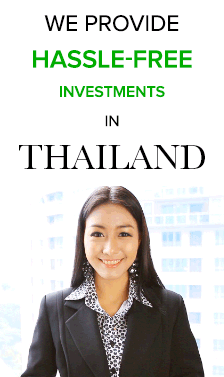Vietnam Airlines introduces Airbus A350 on Hanoi – Tokyo Haneda route
Vietnam Airlines welcomed its inaugural Airbus A350-900 XWB service to Tokyo Haneda, with the arrival of flight VN384 at 14:18 local time.
Haneda is the fifth destination in Vietnam Airlines’ network to be operated by the airline’s Airbus A350 fleet. Previously, the Vietnamese flag-carrier had already deployed its A350 fleet on the Hanoi/Ho Chi Minh city to Paris and Hanoi to Seoul routes from October 2015, Ho Chi Minh to Shanghai route from April 2016 and Ho Chi Minh city to Osaka route from October 2016. This is part of the national carrier’s plan to replace the wide-body fleet on long-haul flights.
Mr. Nguyen Quang Trung, General Manager of Vietnam Airlines’ Japan Branch Bản said:
“Vietnam Airlines is proud to bring Airbus A350 to Hanoi – Tokyo Haneda route in order to meet the increasing travel demand between the two busy cities. This also contributes to the development of tourism and trade between Vietnam and Japan, as well as reaffirms the position, image and superior quality of services that Vietnam Airlines offers to the Japanese market.”
Vietnam Airlines currently offers flights to Tokyo with a frequency of 31-35 flights/week via Narita and Haneda airport, including 14 flights/week from Hanoi, 12-14 flights/week from Ho Chi Minh city and 5-7 flights/week from Danang.
Source:aviationtribune
Thailand holds key rate as expected
The Thai central bank held its key interest rate at close to a record low, despite International Monetary Fund recommendations that the country ease monetary policy, reports Bloomberg. Committee members left the one-day bond repurchase rate at 1.5%.A statement from the central bank revised the GDP growth forecast to 3.4%, up from 3.2%, on an expected 2.2% rise in exports.
The statement also indicated that a strong baht may pose challenges to the economy as Thailand works to boost exports.
However, it’s highly likely that the MPC will increase the policy rate in the latter half of this year, given estimated higher inflation. We expect headline inflation at 1.98 per cent in 2017. The Thai economic recovery will likely be more certain after consistent fiscal stimulus.We believe that this interestrate direction will not lead to significant revision of listed companies’ estimated earnings, as their debt level (excluding financial institutions) remains low with a relatively high proportion of fixedrate debt. Commercial banks could gain from the upward interestrate trend.
The listed companies’ estimated net profit is Bt991 billion or Bt101.36 per share this year, reflecting the 2017 SET Index target at 1,620 points. On the other front, given the upward interestrate trend, capital that will come in to drive the Stock Exchange of Thailand may be thinner after expected higher bond yields followฌing the interestrate trend, and the market earnฌing yield gap may be narrower. This means the SET will become less attractive for investment.
Source:Asia Time
China ranks third among foreign direct investors in Vietnam in Q1
China invested a total of 823.6 million U.S. dollars in Vietnam in the first quarter of 2017, being the third largest foreign direct investor of the country, reported the Vietnam’s Foreign Investment Agency on Friday.Accordingly, China accounted for 10.86 percent of the total registered foreign direct investment (FDI) poured into Vietnam in the first three months (Q1).
South Korea was the largest foreign investor of Vietnam with 3.74 billion U.S. dollars, accounting for 48.62 percent of the total registered capital in the mentioned period, tailed by Singapore with 910.8 million U.S. dollars and 11.81 percent, respectively.In the first three months, Vietnam attracted 7.71 billion U.S. dollars in FDI, up 77.6 percent year-on-year, while disbursement reached 3.62 billion U.S. dollars, up 3.4 percent against the same period last year, said the agency.
The manufacturing sector received the largest FDI capital, with 6.54 billion U.S. dollars, accounting for 84.9 percent of the total capital registered in Q1, followed by the real estate sector with 343.69 million U.S. dollars and 4.4 percent, respectively.As of March 20, 2017, Vietnam has had a total of 23,071 valid FDI projects with 300.7 billion U.S. dollars pledged, of which 158.45 billion U.S. dollars had been disbursed, said the agency, which is under the Vietnam Ministry of Planning and Investment.
Source:xinhuanet
Sembcorp unit eyeing an 8th industrial park in Vietnam
Under an MOU with its Vietnamese partners, it will study the feasibility of building one in Quang Tri province
WITH seven industrial parks successfully up and running across Vietnam, the senior management at Sembcorp Development believes that the time is right to consider building an eighth. There are plans to conduct a feasibility study to see whether the country’s Quang Tri province can be a suitable site to house the next Vietnam-Singapore Industrial Park (VSIP).
Sembcorp Development’s chief executive officer Kelvin Teo said in Hanoi on Thursday: “We have to do our due diligence first to assess the commercial viability of this project. We also have to work together with our partners in Vietnam.” Mr Teo, who is also co-chairman of the VSIP board of management, added that, based on previous experience, it could take about a year or two to arrive at a decision and draw up a good masterplan.
“Our job is to promote investment and create employment, so that there is long-term sustainability for the project … We need to be very clear about what types of industries are suitable for Quang Tri. We have yet to study all this,” he said. Mr Teo was in the Vietnamese capital to sign a memorandum of understanding with Quang Tri Province People’s Committee chairman Nguyen Duc Chinh and Becamex IDC Corporation chairman Nguyen Van Hung.
The agreement brings together the different parties to explore the feasibility of developing the eighth VSIP in the province. The signing ceremony was witnessed by Singapore Prime Minister Lee Hsien Loong, who is on a four-day official visit to Vietnam, and Vietnam Prime Minister Nguyen Xuan Phuc. The VSIPs are developed as a joint venture between Vietnam’s state-owned enterprise Becamex IDC and a consortium of three Singapore companies.
This consortium is majority-led by Sembcorp Development, a fully-owned subsidiary of Sembcorp Industries. The other partners are Mitsubishi Corporation Development Asia and KPM Vietnam Investment. The first VSIP in Binh Duong province celebrated its 20th anniversary last year. In total, the parks have attracted some US$9 billion in investments; the approximately 690 multinational companies there have created over 170,000 jobs.
Separately on Thursday, Sembcorp Development signed a deal with the People’s Committee of Da Nang on Thursday to look into whether a new software park could be developed in Da Nang. Mr Teo said such a project, centred on innovation and technology, would enable Vietnam to move up the value chain. “The skills level (at the software park) will be higher than at an industrial park. Da Nang is an area that we can explore. We will look at the site, and form a team to study it closer,” he said.
Also on Thursday, another Sembcorp unit, Sembcorp Utilities, inked an agreement to work with Vietnam’s Ministry of Industry and Trade to develop the Dung Quat power plant in Quang Ngai province, in conjunction with the fifth Vietnam-Singapore Industrial Park. Two other agreements were signed in conjunction with Mr Lee’s visit. Keppel Land signed a deal with Vietnam’s State Capital Investment Corporation to collaborate on investment opportunities in Vietnam.
The Singapore International Foundation and the Vietnam-Singapore Friendship Association agreed to work together to promote social innovation and entrepreneurship, arts and cultural exchange, and volunteer cooperation.
Source: Business Times
In Asia’s Infrastructure Race, Vietnam is Among The Leaders
Vietnam’s public and private sector infrastructure investment averaged 5.7 percent of gross domestic product in recent years, the highest in Southeast Asia and compares with 6.8 percent in China, according to the Asian Development Bank. Indonesia and the Philippines spend less than 3 percent, while Malaysia and Thailand spend even less at under 2 percent.The ADB estimates that emerging economies in the region will need to invest as much as $26 trillion through 2030 to build transport networks, boost power supply and upgrade water and sanitation facilities. Vietnam, among the fastest-growing nations in the world, is boosting infrastructure to lure more foreign investors as it positions itself as Asia’s next Tiger Economy.
“The government knows that if they want to compete for investment, low wages aren’t enough,” said Eugenia Victorino, an economist at Australia & New Zealand Banking Group in Singapore. “They need infrastructure good enough to entice companies to put up factories. The development has been fairly spread out, with airports and roads being built across the country.
Those efforts are paying off. Foreign direct investment surged to a record $15.8 billion in 2016, and the economy is forecast by the World Bank to expand more than 6 percent until 2019, among the top performers this decade.
Its challenges are formidable. Vietnam needs about $480 billion through 2020 for infrastructure including 11 power plants with total capacity of 13,200 megawatts and about 1,380 kilometers of highways, according to the government. Just last week, Prime Minister Nguyen Xuan Phuc ordered the transport ministry to speed up plans to attract more private investment for infrastructure as the state budget can only meet a third of the financial need. The share of private investment in infrastructure spending in Vietnam may be less than 10 percent, said Rana Hasan, ADB director of development economics.
Source:Bloomberg









